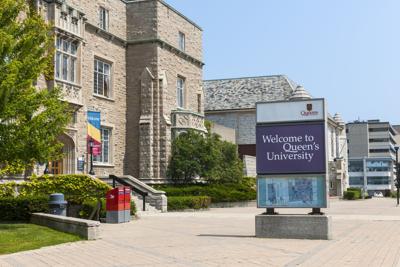Queen’s University is changing its medical school admission process, including adding a lottery, in an attempt to┬áminimize systemic barriers faced by applicants and increase diversity.
Students beginning September 2025 will, if they meet set admission thresholds, be placed in a lottery to determine who gets invited to an interview.
ÔÇťWe have thousands of qualified medical school applicants each year who would make excellent doctors. Our new admissions process will give them equal opportunity to be selected (to move on to this next stage),ÔÇŁ . “This will help level the playing field for prospective students.ÔÇŁ
Thresholds will be determined for grade point average (GPA) and scores in the Medical College Admission Test (MCAT) and Casper situational judgment test. Qualified candidates plucked from the lottery will go on to do multiple mini-interviews, which evaluate core skills and attributes, and top applicants will continue on to a panel interview and final application review before an offer is made.
In making the announcement, the university in Kingston, Ont., said the volume of qualified applicants has been more than the MD program┬áhas had the capacity to review which has required “the use of inflated standards (for MCAT, Casper and GPA scores) to pare the applicant list down and make the admission process manageable.”
Last year, more than 5,000 students applied for 139 spots; 638 were interviewed. The GPA range was 3.03 to 4.0, with the average being 3.76. 
But inflated standards, together with inherent biases in both standardized testing and the ability to build impressive extracurricular resumes, may disadvantage certain groups, the university added.
Queen’s said it would be creating greater access for students from lower socioeconomic backgrounds by setting aside 8 per cent of spots for them in the lottery. The medical school will also be adjusting its existing pathway for Indigenous applicants (which reserves a┬áminimum of four seats for qualified Indigenous applicants per year) by eliminating the Casper test requirement.
The university will be phasing out Queen’s Accelerated Route to Medical School (QuARMS), a highly sought-after program that was overhauled in 2020 to support Black and Indigenous students albeit with only 10 seats, and it will be developing a more comprehensive recruitment pathway for Black students.
These changes will not undermine the quality of medical students and graduates, the university noted, but will enhance fairness and diversify the student body as well as the health workforce.
Just over , with 19.7 per cent East Asian, 16.9 per cent South Asian, 6.3 per cent of Middle East origin and 4.9 per cent each identifying as Black or Indigenous. A third of students came from households with a gross income of more than $100,000. 
ÔÇťTo support health equity, all communities need to see themselves reflected in their care providers,ÔÇŁ said Eugenia Piliotis, the associate dean of Undergraduate Medical Education.




























To join the conversation set a first and last name in your user profile.
Sign in or register for free to join the Conversation